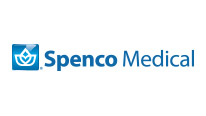When it comes to shoe insoles, the majority of users will agree on two points: Insoles should be comfortable and eminently forgettable.
The makers of Spenco Insoles are fine with their products being invisible to the user, but that doesn’t mean they’ve forgotten the foundation on which the 45-year-old company was built.
“Dr. Wayman Spence started Spenco back in 1967. He was a pioneer in podiatry and sports medicine,” explained Jeff Antonioli, vice president of global sales and marketing at Spenco Medical Corp, based in Waco, TX. “There are other insole companies that have medical professionals as part of their development process, but I think Spenco can be particularly proud of our heritage. The foundation that Dr. Spence built is still very much a part of our company.”
Indeed, the distinctive green SpenCore Material that can be found today in many brands of insoles—a nitrogen-injected neoprene designed to reduce shear and friction, as well as absorb shock—was developed by Spence, Antonioli said.
Maintaining foot health was a passion for Spence, not only for himself (he was known to run 40 miles a week) and his fellow runners, but for his patients with diabetes and arthritis.
Spence was born in 1934 in Tulsa, OK. In 1960 he earned his MD from the University of Oklahoma College of Medicine in Oklahoma City and worked as a physician at a correctional facility in Lompoc, CA, before setting up his practice as a physical medicine and rehabilitation specialist in Salt Lake City. He ultimately moved his practice to Waco in 1967 and founded Spenco. He remained in Waco until his death in 1998.
Before turning his full attention to insoles and wound care, Spence gained some fame as an anti-tobacco crusader. In 1970, he invented a 3D ashtray in the shape of human lungs. When a lit cigarette was left in the ashtray, the smoke filtered through the lung, leaving behind a sticky brown deposit of tar. The hope was the sight of the blackened lung would inspire tobacco users to quit. The lung ashtray was sent to every member of Congress as part of a Federal Communications Commission campaign to allow free antismoking ads on television.
Eventually, Spence went full speed ahead with his foot health inventions, and he is credited with creating the first silicone gels for preventing decubitus ulcers, according to a 1980 interview in Runner’s World magazine.
It’s in that spirit of invention that Spenco operates today, Antonioli said.
One of its newest products is the Total Support Insole, which comes in three different versions: the Original, with semirigid support; the Thin, with semiflexible support; and the Max, with rigid support. All three insoles use Spenco’s Full-Contact Comfort Fit system that stabilizes, controls, and cushions the foot from heel to toe.
For Spence, athletes and diabetic patients faced the same issue: Excessive shear forces on their feet. In the Runner’s World interview Spence described his insoles as acting “as an additional layer of cushioning similar to the fat that pads between the skin and bony substance of the feet.”
Spenco has taken the Total Support system to the next level by incorporating it into a line of slip-on sandals. Spenco Sandals offer cushioning against impact and motion control to reduce pronation and supination, a common problem with mass market flat flip-flops. The company spent many years finding the right balance of form and function for its line of sandals, Antonioli said.
Spence also left his mark on the company’s line of moist wound care and blister care products. “Spenco has a complete line of wound care products called 2nd Skin. Dr. Spence developed many of these products himself and many have continued to evolve and be improved upon,” Antonioli said.
The line includes the 2nd Skin Moist Burn Pad hydrogel dressings, hydrocolloid blister pads, dressing kits, and blister kits. The line’s newest addition is 2nd Skin AquaHeal hydrogel bandages made from sterile water to keep wounds cool and speed healing.
From a financial perspective, Spenco has done well. From 1984 to 1994, the company was a division of Dallas-based Kimberly-Clark, the giant personal and healthcare products company. In 1994, Spenco’s chief executive officer, Steven B. Smith, bought the company back. At the time, Spenco had about $30 million in sales.
While Dr. Spence is now part of the company in spirit only, Spenco continues to work closely with medical experts—including some past presidents of the American Podiatric Medical Association—to help develop its products, Antonioli said. “We’ve maintained that tradition of relying on medical experts to make our products the best they can be,” he added.
Shalmali Pal is a freelance medical editor and writer based in Tucson, AZ.









